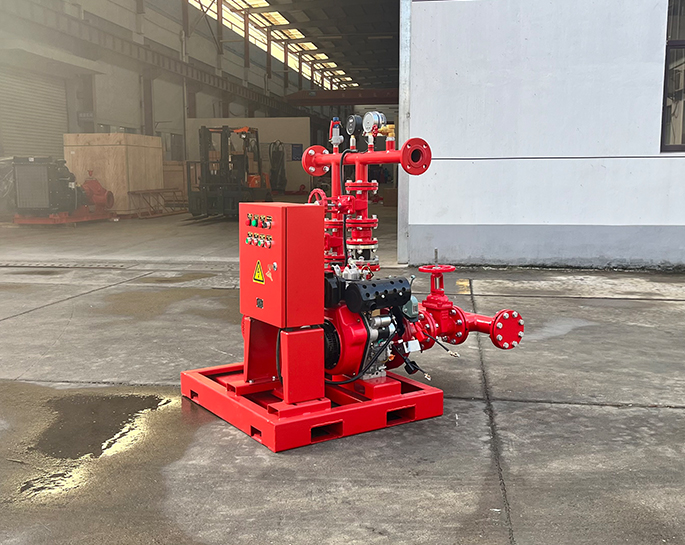Can fire pumps be installed outdoors?
Jan 18, 2024
Share:
Yes, fire pumps can be installed outdoors, but there are certain considerations and precautions that need to be taken into account. Outdoor installations may be subject to environmental conditions such as weather, temperature variations, and exposure to elements. Here are some key points to consider:
1. **Enclosure:** It's common to provide an enclosure or shelter to protect the fire pump from direct exposure to rain, snow, sunlight, and other environmental elements. The enclosure should be designed to prevent water ingress and protect the pump from extreme temperatures.
2. **Freeze Protection:** If the installation is in an area where freezing temperatures are a concern, measures should be taken to prevent the fire pump and associated components from freezing. This may involve insulation, heating elements, or other freeze protection methods.
3. **Accessibility:** The outdoor location should allow easy access for maintenance and servicing of the fire pump. Adequate space and clear pathways should be provided for personnel to inspect and repair the pump as needed.
4. **Compliance with Codes and Standards:** Ensure that the installation complies with relevant local building codes, fire codes, and industry standards. These codes may have specific requirements for outdoor installations of fire pumps.
5. **Ventilation:** Adequate ventilation should be provided to prevent the buildup of heat within the enclosure, especially if the climate is hot. Proper ventilation helps in maintaining the optimal operating conditions for the fire pump.
6. **Drainage:** Ensure proper drainage to prevent water accumulation around the fire pump. Standing water can cause issues and affect the performance of the pump.
It's important to consult with local authorities, fire protection professionals, and adhere to the manufacturer's guidelines and specifications for the specific fire pump being installed. Additionally, compliance with any applicable regulations and standards is crucial to ensure the effectiveness and safety of the fire protection system.

1. **Enclosure:** It's common to provide an enclosure or shelter to protect the fire pump from direct exposure to rain, snow, sunlight, and other environmental elements. The enclosure should be designed to prevent water ingress and protect the pump from extreme temperatures.
2. **Freeze Protection:** If the installation is in an area where freezing temperatures are a concern, measures should be taken to prevent the fire pump and associated components from freezing. This may involve insulation, heating elements, or other freeze protection methods.
3. **Accessibility:** The outdoor location should allow easy access for maintenance and servicing of the fire pump. Adequate space and clear pathways should be provided for personnel to inspect and repair the pump as needed.
4. **Compliance with Codes and Standards:** Ensure that the installation complies with relevant local building codes, fire codes, and industry standards. These codes may have specific requirements for outdoor installations of fire pumps.
5. **Ventilation:** Adequate ventilation should be provided to prevent the buildup of heat within the enclosure, especially if the climate is hot. Proper ventilation helps in maintaining the optimal operating conditions for the fire pump.
6. **Drainage:** Ensure proper drainage to prevent water accumulation around the fire pump. Standing water can cause issues and affect the performance of the pump.
It's important to consult with local authorities, fire protection professionals, and adhere to the manufacturer's guidelines and specifications for the specific fire pump being installed. Additionally, compliance with any applicable regulations and standards is crucial to ensure the effectiveness and safety of the fire protection system.







